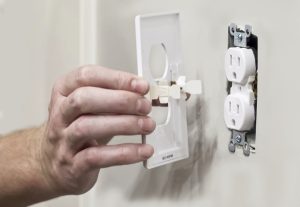How are 2023 NEC terminal connection requirements different?
Overview
There are numerous types of equipment in existence that utilize various types of terminations. Some devices utilize clamping screws, and some utilize pressure connectors. As technologies evolve, new types of termination methods become available. In keeping up with these new termination types, the NEC has had to adapt the existing requirements for language better suited for specifying connection requirements. This is precisely what has taken place in Subdivision 110.14(A) in the 2023 NEC. The existing language has been updated to clarify specifically what type of connections the subdivision is referring to.
available. In keeping up with these new termination types, the NEC has had to adapt the existing requirements for language better suited for specifying connection requirements. This is precisely what has taken place in Subdivision 110.14(A) in the 2023 NEC. The existing language has been updated to clarify specifically what type of connections the subdivision is referring to.
Applying the 2023 Code
Various types of terminations exist when it comes to electrical connections. Section 110.14 covers the requirements for these connections. Specifically, it discusses the terminals, splices, and temperature limitations associated with such connections. For added clarification, Subdivision 110.14(A), which discusses terminals, has been revised to indicate that it is requiring a mechanically secure electrical connection, and not just a “thoroughly good” connection, as it previously read. This change specifies that the connection must be mechanically secure, and was made to specifically address the confusion regarding equipment that utilizes friction-type connections. Friction-type connections are not mechanically secure, and therefore do not meet the requirements of Subdivision 110.14(A). This does not mean that they cannot be used, however. If the equipment is listed, that means it is perfectly fine to be used. It simply means that the requirements of Section 110.14 do not apply to such connections.
What’s New for the 2023 NEC?
2020 NEC
In the 2020 NEC Subdivision 110.14(A) read as follows:
(A) Terminals.
Connection of conductors to terminal parts shall ensure a thoroughly good connection without damaging the conductors and shall be made by means of pressure connectors (including set-screw type), solder lugs, or splices to flexible leads. Connection by means of wire-binding screws or studs and nuts that have upturned lugs or the equivalent shall be permitted for 10 AWG or smaller conductors.
Terminals for more than one conductor and terminals used to connect aluminum shall be so identified.
2023 NEC
In the 2023 NEC Subdivision 110.14(A) reads as follows:
(A) Terminals.
Connection of conductors to terminal parts shall ensure a mechanically secure electrical connection without damaging the conductors and shall be made by means of pressure connectors (including set-screw type), solder lugs, or splices to flexible leads. Connection by means of wire-binding screws or studs and nuts that have upturned lugs or the equivalent shall be permitted for 10 AWG or smaller conductors.
Terminals for more than one conductor and terminals used to connect aluminum shall be so identified.
